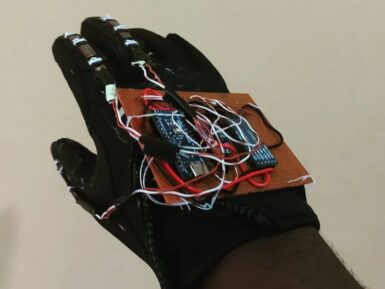
Overview
We've taken the original Circuit Playground Classic and made it even better! Not only did we pack even more sensors in, we also made it even easier to program.
Adafruit Circuit Playground Express is an all-in-one design board featuring a processor, sensors, LEDs, USB, and more, making it an ideal introduction to electronics and programming. Circuit Playground Express currently supports programming via Microsoft MakeCode, a web-based code editor for physical computing.
Using MakeCode's visual block-based editor, or its JavaScript editor, users can build programs to create custom animations, sounds, and use sensor events like "On Shake" to react to external stimulus.
The Circuit Playground Express is based on an ultralow-power SMART SAM L21 Microcontroller, using a 32-bit ARM® Cortex®-M0+ core.
The SAM L21 features sophisticated power management technologies, allowing for very low current consumption.
It can be powered from USB, "AAA" battery pack, or with a Lipoly battery. The round, sensor-packed Circuit Playground Express Board features alligator-clip pads around the edge, making it easy to connect to projects without having to solder.
Built-in USB allows quick connectivity for programming, with no special cables or adapters required.
Get Inspired
A quick tutorial on how to interface the voice recognition module with few examples.

For people not familiar with American Sign Language (ASL), being able to recognize what certain hand motions and positions mean is a nearly impossible task. To make this process easier, Hackster.io user ayooluwa98 came up with the idea to integrate various motion, resistive, and touch sensors into a single glove that could convert these signals into understandable text and speech. The system is based around a single Arduino Nano board, which is responsible for taking in sensor data and outputting the phrase that best matches the inputs. The orientation of the hand is ascertained by reading values from the X, Y, and Z axes of a single accelerometer and applying a small change based upon prior calibration. Meanwhile, resistive flex sensors spanning the length of each finger produce a different voltage level according to the bend’s extent. At each iteration of the program’s main loop, a series of Boolean statements are evaluated to pick the phrase that best matches the current finger bends and hand orientation, and this data is then outputted via the UART pins to an attached Bluetooth® HC-05 module. The final component is a connected phone running a custom app that takes the incoming words from Bluetooth® and saves them for text-to-speech output when the button is pressed. To see more about this project, you can read ayooluwa98’s write-up here on Hackster.io.









